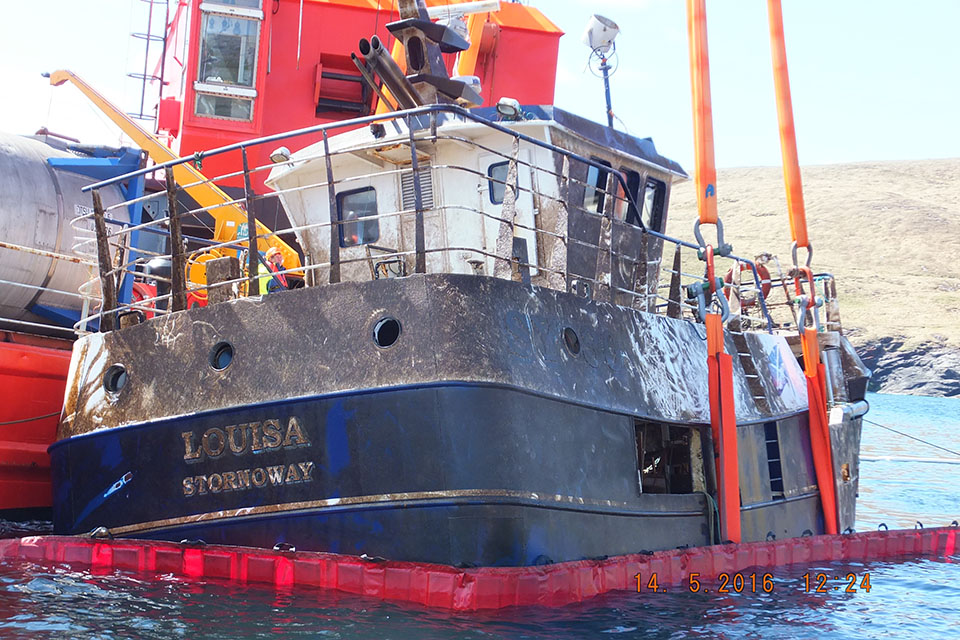Sinking of vivier creel boat Louisa with loss of 3 lives
Location: Isle of Mingulay, Outer Hebrides, Scotland.
Accident Investigation Report 17/2017
Investigation report into marine accident including what happened and safety lessons learned:

Summary
Fishing vessel Louisa (SY30) sank by the bow and foundered while at anchor in Mingulay Bay. Following recovery and investigation of the wreck, it is concluded that the probable cause of the foundering was flooding of the hold. The skipper and crew were all tired and had gone to bed in the accommodation, and the hold bilge alarm failed to wake them because the alarm sounder in the crew cabin had previously been disabled.
When abandoning the vessel, the crew attempted to launch the liferaft. However, the liferaft failed to inflate because its CO2 cylinder was empty, which resulted in the skipper and crew having to enter the water. Although they had all donned lifejackets, the skipper and two crew became unresponsive through cold water immersion and were later found face down in the water by the rescue services.
Before abandoning Louisa, the crew activated the vessel’s EPIRB. Although UKMCC had received an initial alert by 0239, the first request for a SAR asset was not made by HMCG until 0322. Had the rescue services arrived on scene earlier, it is possible that there would have been more survivors.
Safety lessons
-
the circumstances of this accident and subsequent trials and testing undertaken following the accident have raised concerns about the effectiveness of the lifejackets worn by Louisa’s skipper and crew
-
the condition in which the vessel was left while all on board went to bed in the accommodation was inconsistent with best practice and demonstrated an underestimation of the risks associated with flooding and foundering
-
the hold bilge alarm sounder in the crew cabin had previously been disabled to prevent routine disturbance. Consequently, the skipper and crew did not receive any early warning that the hold was flooding
-
significant items of the vessel’s lifesaving appliances, including its liferaft, were out of date for service or replacement
-
the liferaft’s CO2 inflation cylinder had not been refilled during scheduled maintenance owing to deficiencies in the liferaft servicing work process
-
weaknesses in knowledge and procedures led to delays in the SAR operation
Recommendations
Recommendations have been made to:
-
The Maritime and Coastguard Agency (2017/130 and 2017/131) to conduct urgent research into the suitability of lifejacket testing protocols and to enhance its response to satellite distress beacon alerts
-
Premium Liferaft Services (2017/132) and Thameside Fire Protection Company (2017/133) to improve their servicing procedures with the aim of readily identifying anomalies in recorded CO2 inflation cylinder weights
-
The vessel’s owners (2017/134) to develop a planned maintenance system to ensure safety equipment is adequately maintained, and to conduct formal risk assessments to match a vessel’s full range of anticipated activities
Related Publications
A safety flyer to the fishing industry highlighting a number of the safety lessons was produced for this report.